Mekhela Chador
-

Handloom Sarees
Handloom Sarees - Embrace timeless elegance with authentic pure handloom sarees from...
-

Jamdani Sarees
Jamdani Saree is one of the finest handwoven silk patterned saree of...
Collection: Mekhela Chador
Mekhela Sador is a traditional Assamese attire worn by women, consisting of two pieces: the mekhela (bottom piece) and the Sador (top piece). Mohi's Mekhela Sador beautifully embody simplicity, sustainability, and a tribute to Assamese traditional handloom heritage.
-

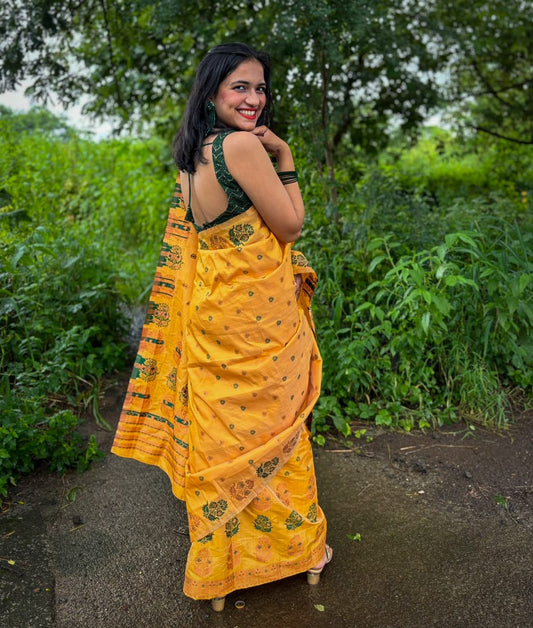 10% off available
10% off availableDevi Aparajita Yellow Mekhela Chador Saree
Regular price Rs. 5,500.00 INRRegular price -
White & Neon Pink Hand Woven Assam Silk Mekhela Chador
Regular price Rs. 32,320.00 INRRegular price -

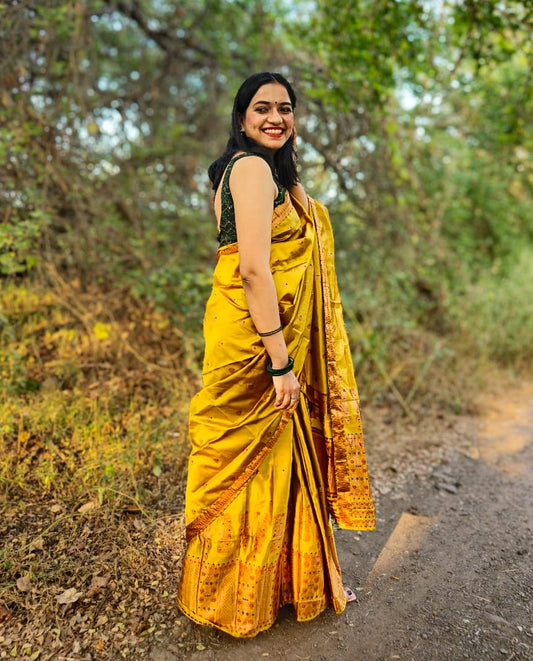 10% off available
10% off availableArunima Yellow Mekhela Chador Saree
Regular price Rs. 4,000.00 INRRegular price -

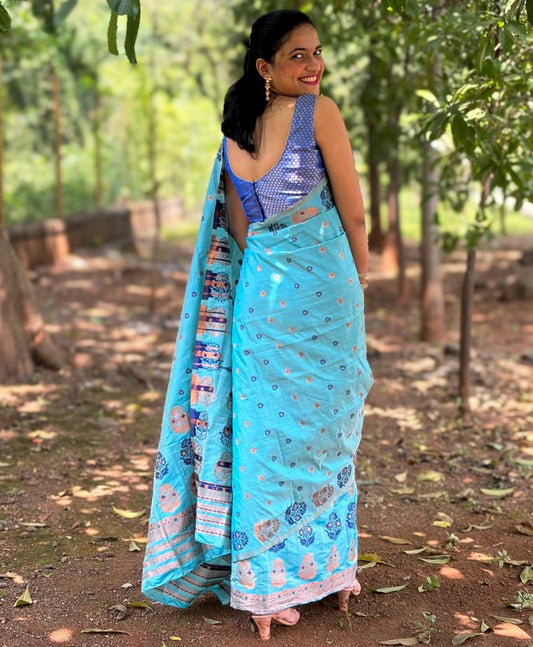 10% off available
10% off availableDevi Pratibha Blue Handloom Mekhela Chador saree
Regular price Rs. 6,100.00 INRRegular price -

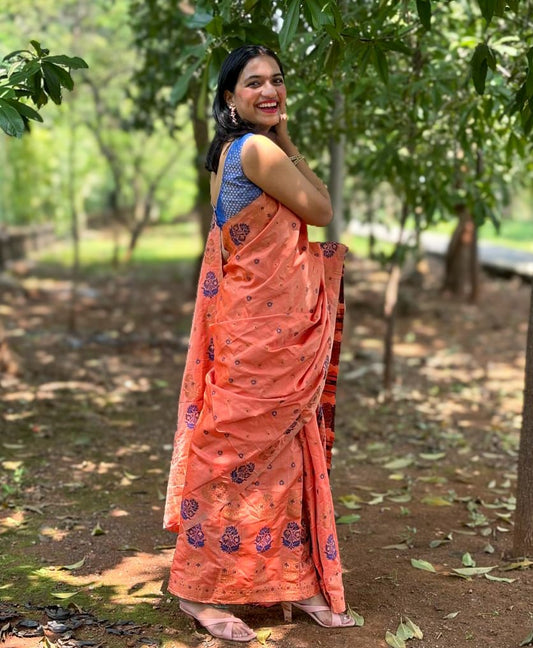 10% off available
10% off availableDevi Kaushiki Orange Handloom Mekhela Chador saree
Regular price Rs. 6,100.00 INRRegular price -

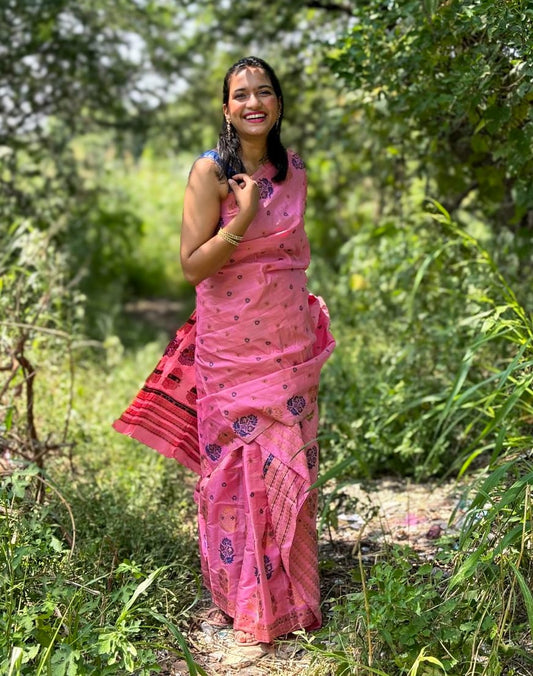 10% off available
10% off availableDevi Aishani Pink Handloom Mekhela Chador saree
Regular price Rs. 6,100.00 INRRegular price -

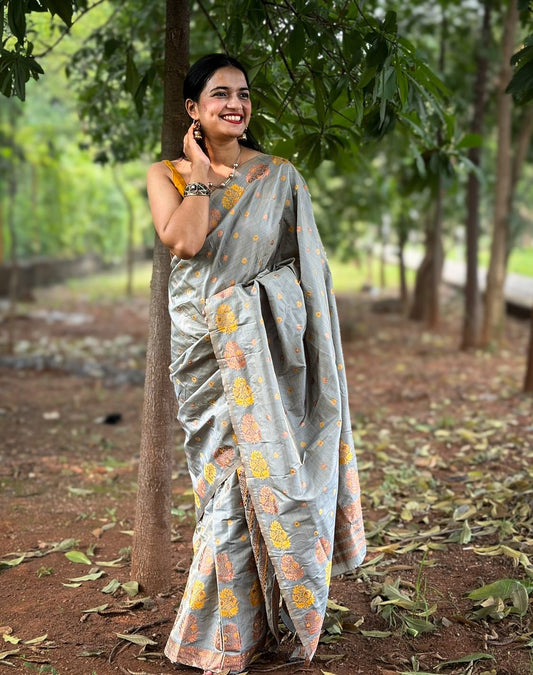 10% off available
10% off availableDevi Advika Grey Handloom Mekhela Chador saree
Regular price Rs. 6,100.00 INRRegular price -

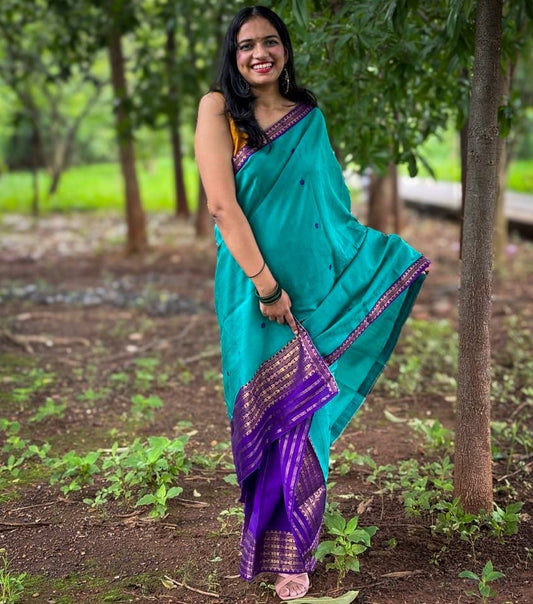 10% off available
10% off availableNiharika Green Silk Handloom Mekhela Chador saree
Regular price Rs. 4,300.00 INRRegular price -

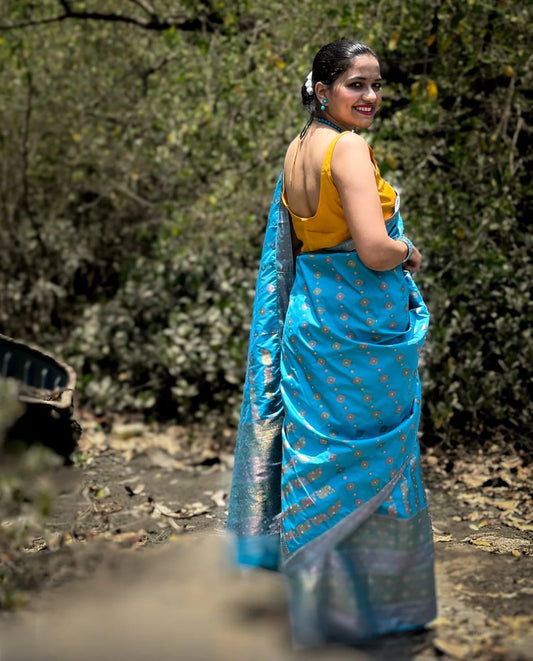 10% off available
10% off availableAmbar Jyoti Mekhela Chador
Regular price Rs. 7,100.00 INRRegular price -

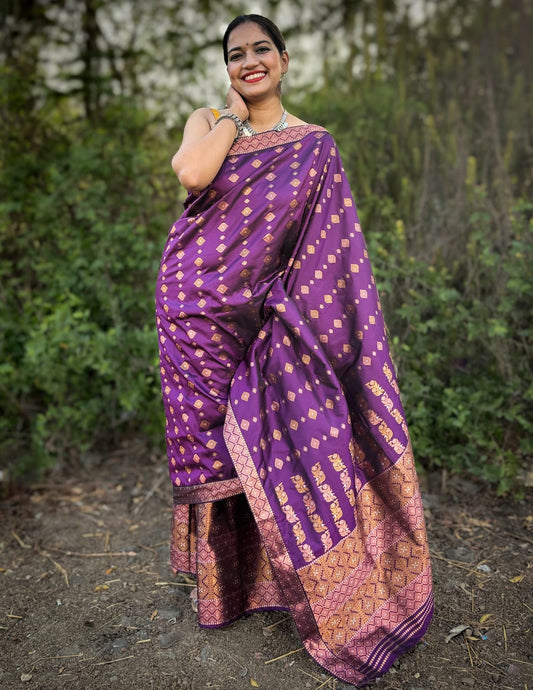 10% off available
10% off availableSurmayi Mekhela Chador
Regular price Rs. 7,100.00 INRRegular price -

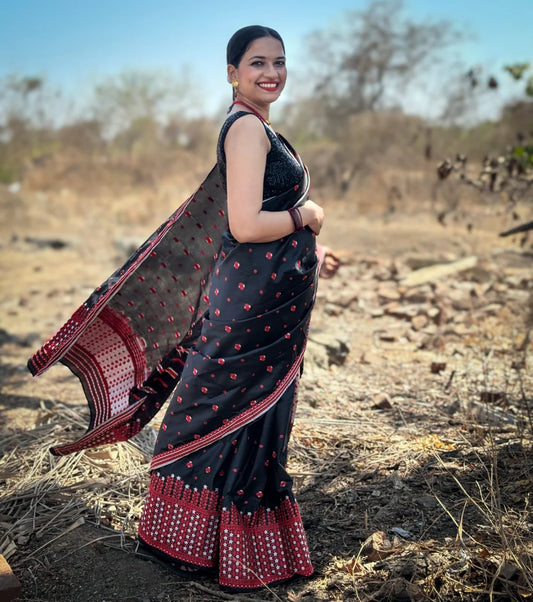 10% off available
10% off availableMadhubani Mekhela Chador
Regular price Rs. 6,600.00 INRRegular price -
Black Hand Woven Assam Silk Mekhela Chadar
Regular price Rs. 42,420.00 INRRegular price -
Hot Pink Hand Woven Assam Silk Mekhela Chadar
Regular price Rs. 52,520.00 INRRegular price -
Mint Green Hand Woven Assam Silk Mekhela Chadar
Regular price Rs. 32,320.00 INRRegular price -
Peach Hand Woven Assam Silk Mekhela Chadar
Regular price Rs. 52,520.00 INRRegular price -
Bottle Green Hand Woven Assam Silk Mekhela Chadar
Regular price Rs. 28,280.00 INRRegular price -
Peach Hand Woven & Motifts Assam Silk Mekhela Chadar
Regular price Rs. 28,280.00 INRRegular price -
Khadi Hand Woven & Motifts Assam Silk Mekhela Chadar
Regular price Rs. 25,250.00 INRRegular price -
White and Gold Hand Woven Assam Silk Mekhela Chador
Regular price Rs. 42,420.00 INRRegular price -
Black Hand Woven & Motifs Assam Silk mekhela Chador
Regular price Rs. 38,380.00 INRRegular price -
Black & Grey Hand Woven & Motifs Assam Silk Mekhela Chador
Regular price Rs. 52,520.00 INRRegular price -
Red Hand Woven & Motifs Assam Silk Mekhela Chador
Regular price Rs. 28,280.00 INRRegular price -
White Hand Woven & Motifs Assam Silk Mekhela Chador
Regular price Rs. 52,520.00 INRRegular price -
Hot Pink Hand Woven & Motifs Assam Silk Mekhela Chador
Regular price Rs. 28,280.00 INRRegular price
Quality Check Process
Collapsible content
About
Mekhela chador is a traditional Assamese dress worn by women in Assam. It consists of two main pieces of cloth that are draped around the body. The bottom piece, known as the mekhela, is wrapped from the waist down. It is a wide cylindrical piece of cloth that is pleated and tucked in at the waist, with the folds facing to the right, unlike the Nivi style saree where the pleats face left. While the mekhela itself is not tied with strings, an underskirt with a string is often worn underneath.
The top piece of the dress, called the chador, is a long cloth with one end tucked into the upper part of the mekhela and the rest draped over the body. Unlike the pavadai dhavani, the chador is tucked in triangular folds. Traditionally, a fitted blouse is worn with the mekhela chador, though in the past, a garment called a riha was worn instead. The riha is still a part of the Assamese bridal trousseau, now worn over a fitted blouse and is often seen at indigenous traditional events like Bihu and other Assamese festivals. The ornamental designs on mekhela-chadors are traditionally woven, not printed. Sometimes, a woven pattern called paari is stitched along the sides of a chador or the bottom of a mekhela. These patterns include motifs of animals, birds, human figures, flowers, diamonds, and celestial phenomena. Both tribal and non-tribal weavers create these indigenous patterns, known as phul. The bright-hued diamond motifs, representing fine workmanship, are a typical feature of Assamese textiles. In Pat and Muga silk, delicate designs of flowers and creepers are common, while bold geometric motifs are typically found in Eri and cotton fabrics.

















































